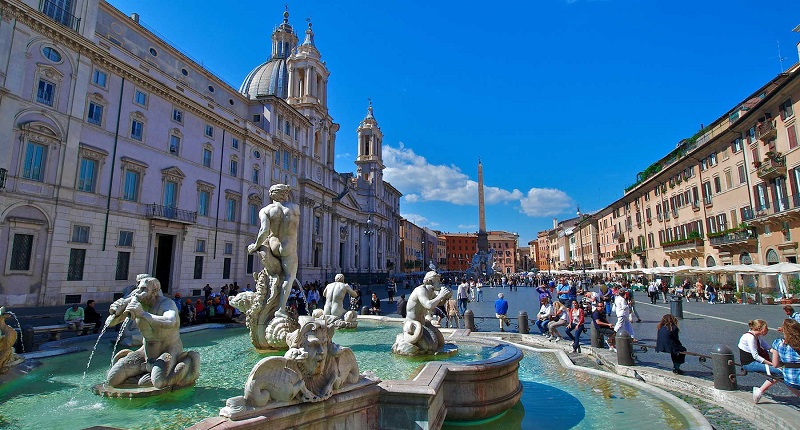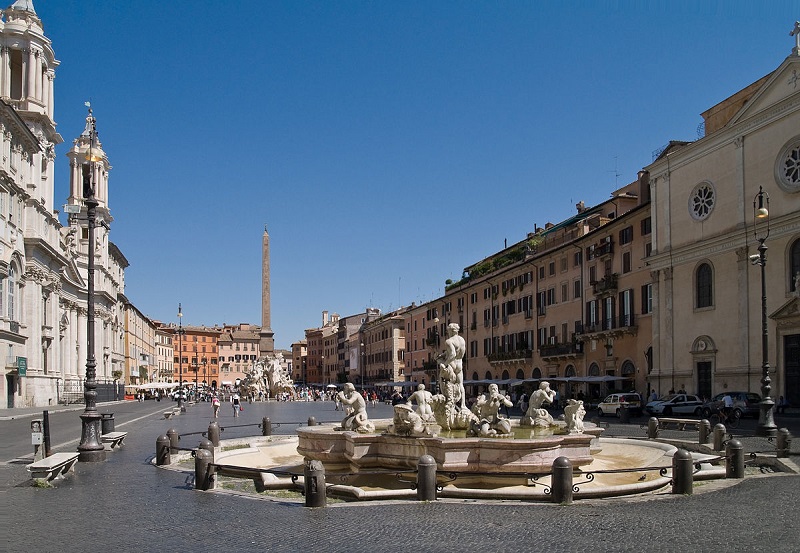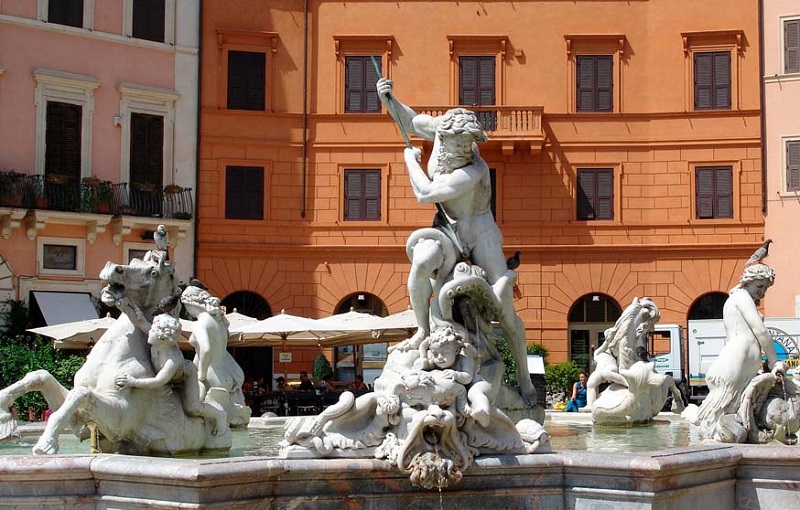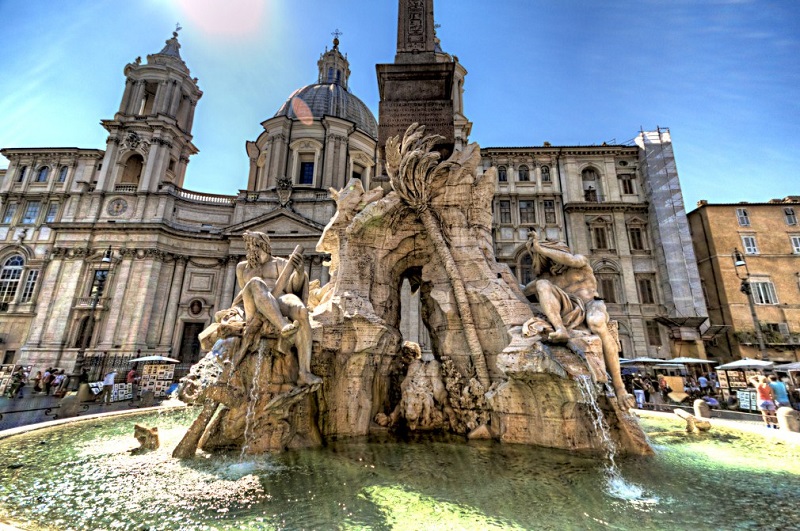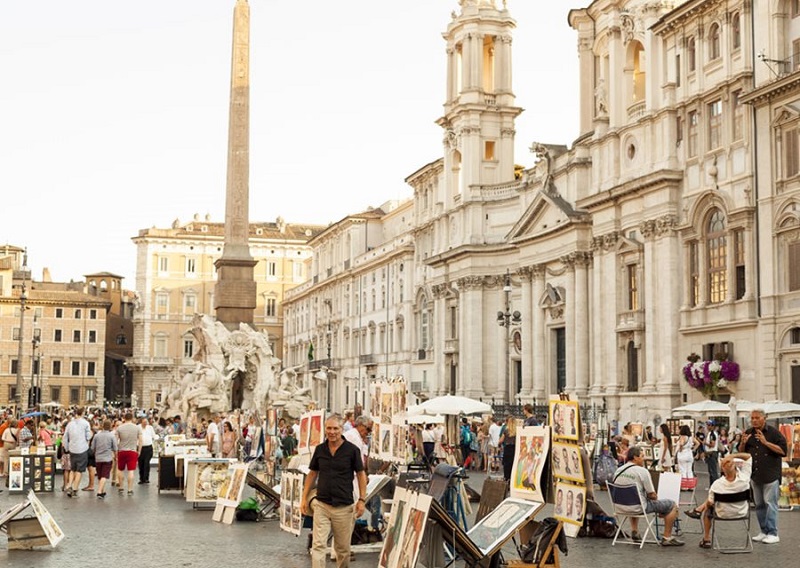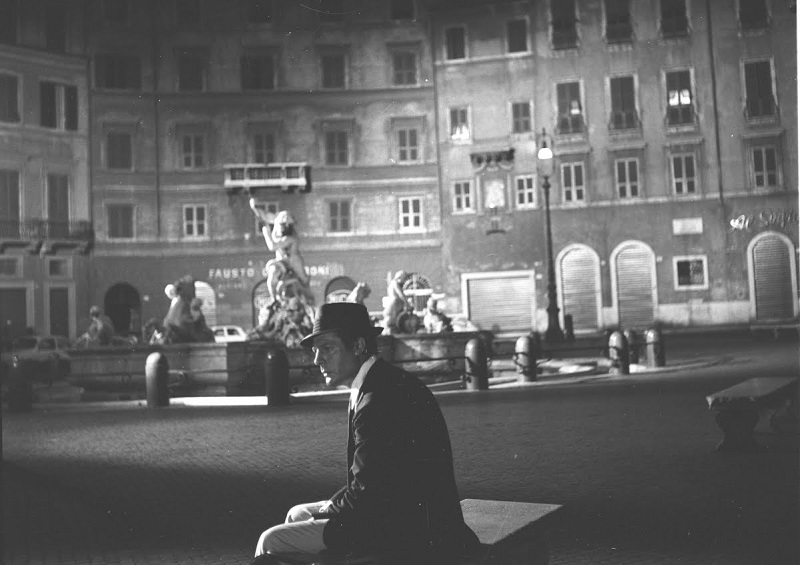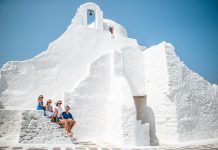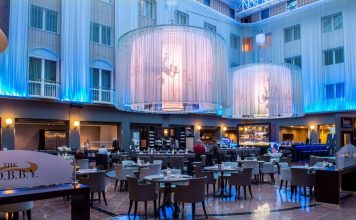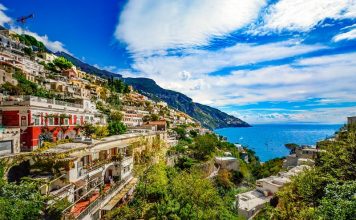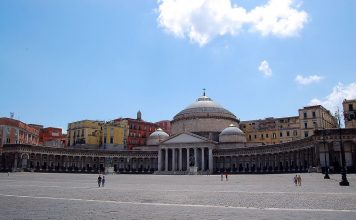One Of the Most Beautiful Squares In Rome
Source: Link
Do you love Piazza Navona in Rome? Here are 10 amazing facts about this beautiful place you have never heard before that will possibly make you fall in love with it even before visiting! This location displays the skills and expertise of Giacomo della Porta, Bernini, and Boromini. These masters of their craft managed to create a wonder within the Rome that has survived the passage of time and to this day remains one of the most famous attractions in the world. The Piazza Navona is symbolized by 3 fountains, namely the Fountain of the 4 rivers, the Fountain of Neptune, and the Fountain of the moor. One church is found at the middle, the Agone Church designed by Boromini. If you’re visiting Rome you should see all of them and appreciate how detailed they are. Click the next ARROW to see the next image!
A Stadium Was Once Built At The Site
Source: Link
The Stadio di Domiziano was built in 86 A.D. by Domitian, which was used mainly for contests of wit, physical fitness, and athletic purposes. The said stadium was the grand edifice, having a rectangular shape along with its rounded short sides. Click the next ARROW to see the next image!
Fontana Del Moro Was Sculpted By Bernini In 1654
Source: Link
At the southern end of the square, you can see the figures representing a dolphin being driven off by an Ethiopian. This was the work of Bernini, in which copies were made for the masks and sculptures of tritons from the originals, which can be seen at the Villa Borghese. Click the next ARROW to see the next image!
Fontana Del Nettuno Was The Work Of Giacomo Della Porta in 1574
Source: Link
At the northern end of the piazza, you can see the work of Giacomo della Porta. His work involves two fountains similar in appearance, having large masks and tritons. However, the fountain was never completed until in 1878 Antonio Della Bitta was able to carve the statue of Neptune, along with other sculptors. Click the next ARROW to see the next image!
Fontana Dei Quattro Fiumi Was The Largest Of The 3 Fountains
Source: Link
The 3 fountains were among the highlights of the Piazza Navona. The largest of which is the Fontana Dei Quattro Fiumi, which was constructed in 1647 and 1651 and commissioned to Borromini. However, the construction was later taken over by Bernini in which the fountain had 4 figures that represent the 4 continents. Click the next ARROW to see the next image!
Giant Egyptian Obelisk Stands In The Middle Of The Piazza
Source: Link
This design was originally a Roman copy, erected at the center of the square. It is a giant obelisk of Egyptian origin. This was made during the rule of Emperor Domitian. Due to the majestic height of the structure, people were concerned regarding its stability. Click the next ARROW to see the next image!
The Rivalry of Sculptors Bernini and Borromini
Source: Link
Bernini and Borromini were legends during their time. Because of their competitive nature, rumors about the statues sculpted by both geniuses were focused on criticizing their works. However, the result was still impressive at best, gaining the attention of tourists around the world. Click the next ARROW to see the next image!
Piazza Navona Had A Name Before It Came To Be
Source: Link
Originally, Piazza Navona was originally named as Circus Agonalis, the name of the stadium. As years passed, the name began to change to In Agone to Navone and now to Navona. Click the next ARROW to see the next image!
Traditional Covering Of Drains
Source: Link
As the tradition was initiated by Pope Innocent X in 1600s, the drains of the 3 fountains must be covered during Saturdays and Sundays. This was intended to allow people to bathe in pooled water. It was even named Lake of Piazza Navona, which lasted for about 2 centuries. Click the next ARROW to see the next image!
Featured In Several Top-Grossing Films
Source: Link
The Piazza Navona was not only popular due to its sculpture, but it was also due to the movies that featured the square. In fact, several scenes in the movie Angels and Demons in 2000 featured the Piazza Navona. Moreover, it was featured in 1964 and 1970 in some popular movie scenes as well.

